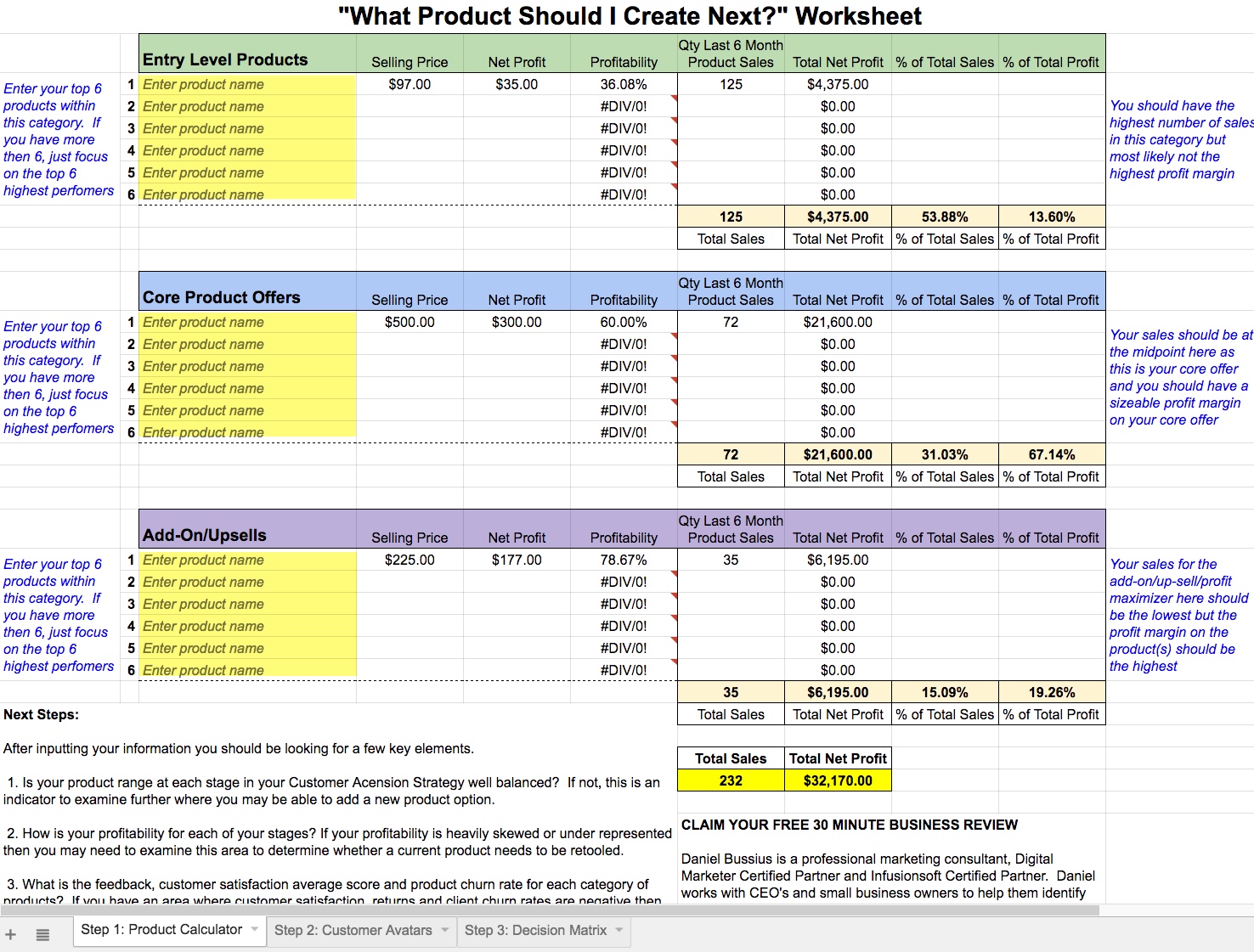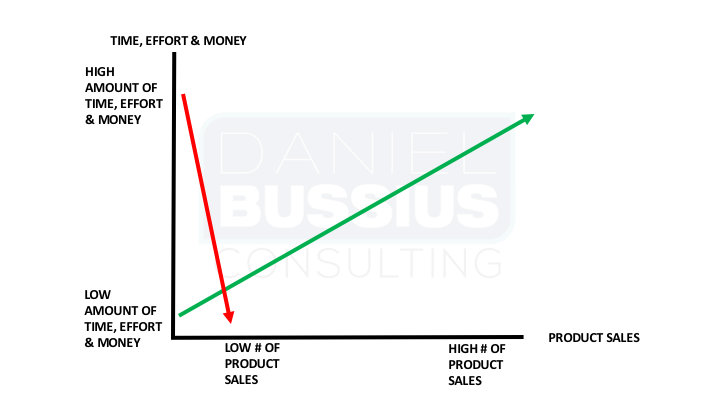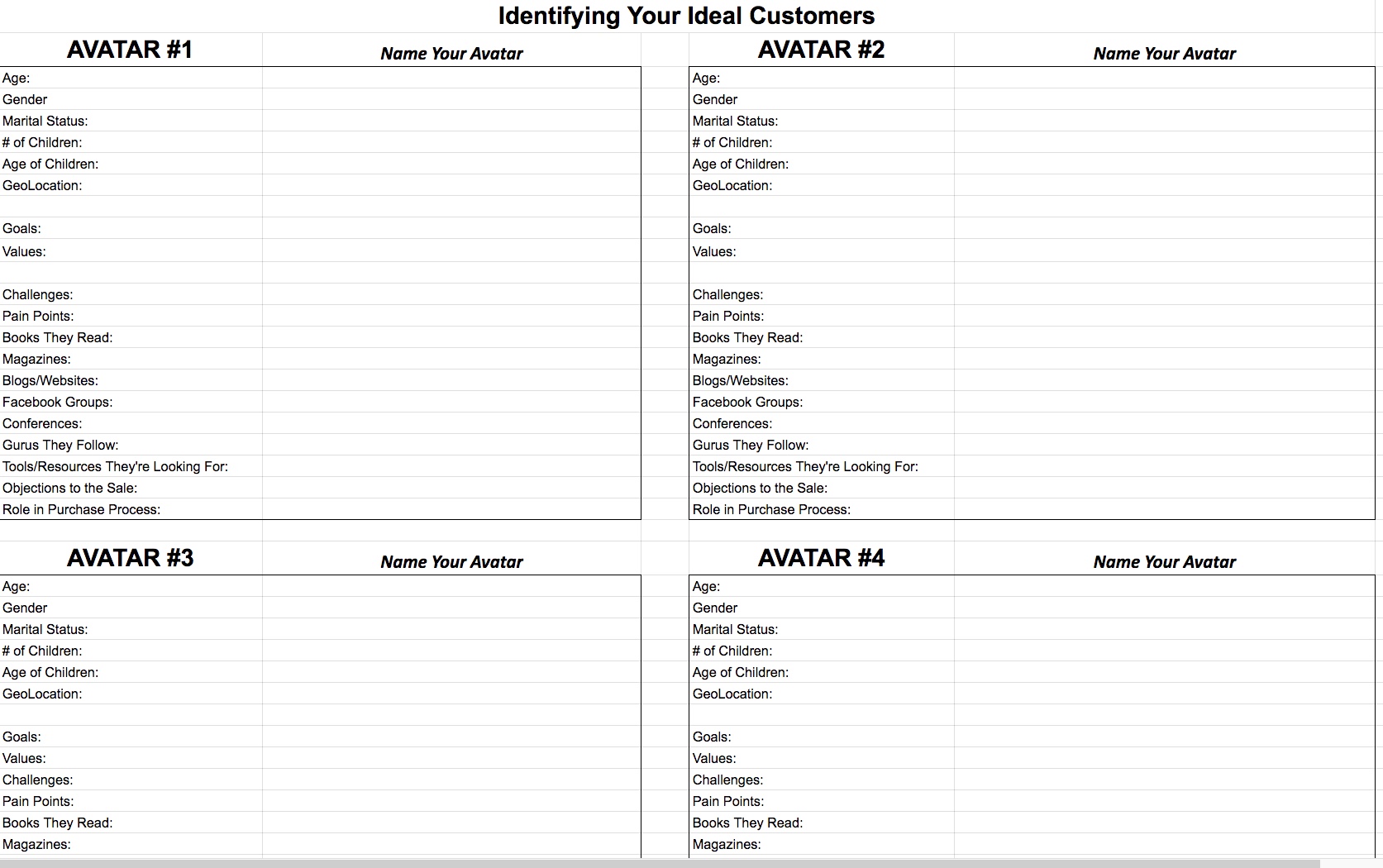Trying to identify what product to create next can become a major road block for entrepreneurs.
Many don't even understand how they got to where they are currently at, let alone what direction they should be headed in next for their product expansion objectives.
It's OK to feel lost or be uncertain of what to develop next and where you should be headed for your product expansion.
But, before you jump in to visions of grandeur, we need to go back to the basics first and make sure you have the right foundation, strategy and direction to build your new product empire from.
Don't worry, this is certainly not a painful process. Actually, it's quite fun!
You are about to develop a product roadmap and strategy to create wealth for yourself.
If you're like me, this part of being an entrepreneur is absolutely the best part. You get to create an idea, release it to the world and watch as the world happily pays you for your product or service that was born from your idea.
It's that kind of feeling that propels you forward to get up and grind hard for your business every single day.
Let's get started with the first step!
STEP 1:
Download and open your Product Creation Worksheet
Once you have downloaded your free copy of the Product Creation Worksheet, open it up to the Step 1: Product Calculator tab.
We're going to first use this tab to identify the top performing products for each stage in your Customer Ascension Strategy (also known as Customer Lifecycle Journey or simply as Ascension Path)
STEP 2:
Top performing products for each stage in the Ascension Path
Make sure to go ahead and type those product names in for each Ascension Stage.
Make sure to watch this tutorial video that provides step-by-step instructions in more detail.
Note: If you do NOT have a Customer Ascension Plan or do not absolutely understand what an Ascension Path is, stop what you are doing and grab your free 30 minute one-on-one consultation with me. Click here to book your time now. I promise you that this consultation will be a complete game changer for you and will provide you with a strategy to instantly begin scaling your business and further monetizing your current customers.

Click to zoom the Product Creation Worksheet Step 1 tab
Note: If you only have 1 product in each area or even less than 1 product in each area, that is OK. I'll cover what to do in this scenario in just a bit.

You want to make sure you list your top performing products for each stage. I suggest you go with the top performers from the last 6 months to ensure your trends are accurate but you may choose any timeframe you wish.
If you have any outliers that are going to heavily skew your data such as you had a partnership last month and sold 1,000 "widgets" from a strategic partnership but do NOT do this on a regular basis, you may wish to remove it as it will skew your data and potentially provide inaccurate insight to your top performers.
If you are confused by this, ask me and I'll clarify for you.

Click to zoom the Product Creation Worksheet Step 1 tab
STEP 3:
Enter your product sales price and net profit
After you have your product names inserted in to the worksheet, plug in the selling price of the products. If you sell the same product for varying prices just choose the average price you charge/sell for the product/service.
The key here is to identify the true price each product is being sold for.

Click to zoom the Product Creation Worksheet Step 1 tab
Next up is inputting your net profit for each of the products.
Net profit is profit minus expenses. So, if it costs you $200 to sell a $500 product every time then your net profit is $300 (product price - cost to sell product = net profit). We can get super detailed here but let's keep it basic and easy. 🙂
You'll notice that the worksheet automatically calculates your profitability for you. This part is really cool as you'll start to see the potential for each product in your product portfolio. There is an incredibly powerful part to this that ties perfectly in with our next step.
STEP 4:
Enter your product sales quantities
The next step is for you to input the total number of sales for each of the products over the last 6 months (again you can choose any timeline but I suggest you do 6 months to get enough data for accurate and recent sales trends).
Here's where things start to get fun and quite powerful for you! I'll explain it using this easy example:
Your product portfolio, the total number of products sold and the profitability for each product is identical to if you were reviewing a stock portfolio.
Take a closer look at the health of your sales.

Your profitability is your ability to earn a high return on your investment. In stock terms, you would want a stock that pays you the highest possible dividend. That is how I want you to look at your profitability numbers.
I also want you to look at your total number of sales for each of those products. Are you selling the product(s) in each of your respective categories that has the highest profitability for you?
If your answer is "yes" you are doing a GREAT job!
If your answer is "NO" then you will want to examine how you can balance this out so that your highest earners are selling the most for you. Going back to our stock example, what would you rather hold more of?
This stock here that has a very high profitability score

Or this stock that is actually losing you money?

You tell me! I'm betting you want the stock that gives you the highest profit margin. That should be the same view as your products for each of the respective product categories you have in play.
Make sense?
If so, continue on. If not, schedule your free 30 minute consultation and let's review your personal product portfolio together. Click here to book your time today.
You'll also see the worksheet calculate a few other numbers for you. Let's cover those guys now.
Examine your profitability and total revenue contribution at each stage of your Ascension Path
The worksheet will provide you with insight in to The total percent of sales contribution each product stage provide to your business.
Although all businesses have different behaviors, usually you will see your entry level products have the highest sales volume because these products offer the lowest barrier to entry for customers. A barrier to entry is usually directly correlated to how much money a customer has to give up of his/her money to acquire your product/service and/or how much time and effort this requires for them.
The more time, effort and money you ask of your customers is directly correlated to your sales and will tend to look like this graph:

Click to zoom the Time, Effort and Money Product Graph
What does this mean to you for your customer Ascension Path?
It means that you should be now looking at your current product portfolio as well as the profitability and the total sales contribution of that product stage to determine if your Ascension Plan has any holes in it or not.
Here's a quick example of what a typical graph might look like for your entry level priced products, core products and more expensive add-on's/upsells:

Click to zoom the Product Stage Correlation to Product Sales graph
If you are happy with your numbers then please continue on to Step 5.
If you are not, before you start creating new products you might want to fix the ones in your product mix now. Start with doing a deep dive in to your product funnels, your customer return and churn rates and reviews.
Don't be afraid to find the 80/20 rule of your existing customers and reach out to the 20% responsible for 80% of your sales and ask them to give you feedback. If you have a healthy relationship with your customers you'll have no problem getting incredibly valuable feedback.
It's easier to fix an existing product most of the time rather than launch an entirely new product as it takes less time, effort and marketing spend.
Step 5: Your Ideal Customers

Your Ideal Customers, also known as your avatars or target customers. These are the people that you have identified that your business is focused on selling too and serving.

Click to zoom the Identifying Your Ideal Customers worksheet
Hopefully you already have this completed. If not, go ahead and fill out the profiles now. It's crucial for you to have this. As you probably know, I am a Digital Marketer Certified Partner and Infusionsoft Certified Partner. Both of these organizations do a great job at walking you through how to complete this. You'll notice my worksheet tab named Step 2: Customer Avatars is courtesy of Digital Marketer. If you need help, book your free 30 minute consult with me clicking this link and I'll get you set up.
Step 6:
The Product Creator Decision Matrix

Click to zoom the Identifying Your Ideal Customers worksheet
The Product Creator Decision Matrix is designed specifically for you to identify the holes in your Customer Ascension path for every single of your Ideal Customers.
As simple as this part of the worksheet is, do not let the simplicity of this fool you. This is quite possible the most powerful part of the spreadsheet.
All of the data that we need for this matrix you've already completed.
In the first tab named Step 1: Product Calculator you input the top performing sales data and contribution to total revenue. From that, we know the health and volume of sales you are doing company-wide for the products we want to focus on.
Next, we have our Ideal Customers (Avatars) in the tab named Step: 2 Customer Avatars profiles completed so we fully understand their wants, needs, desires.
In the next tab named Step 3: Product Creator Matrix we can now start to input each of our products in to each of our Avatars goals and pain points. Doing this will provide us with a comprehensive picture of what products solve each of our types of customer's needs at each stage in our Ascension Path.
Optional but very effective is if you input the prices, net profit and profitability numbers. You'll then start to see which of your Avatar groups is the most profitable for you and what they are buying the most of.

Reviewing this data will give you an enterprise level view of how a Fortune 500 company examines their product lines, the effectiveness of the product lines when compared to the subsets of customer profiles and those product category correlations to overall sales and revenue contributions.
Whew! That was a mouthfull and I probably lost ya there for a moment. In laymen's terms, this means that if you properly use this worksheet I have given you will empower you with the same type of tool that billion dollar companies use.
I really hope this helps shed some light for you on where to go next and what to do next. Running a business is damn hard and along the way it's little insights that can propel you forward and sky rocket you to the next level.
I sincerely hope this gets you a little closer to your goals.
Please make sure to follow me on Facebook and share this with your friends, colleagues and anyone else you think can benefit.

If you have comments, please share them with everyone!















